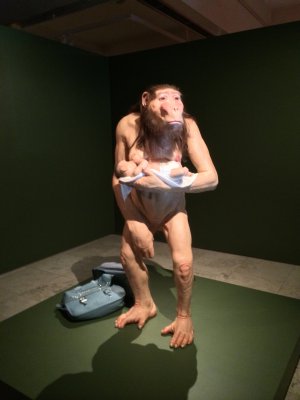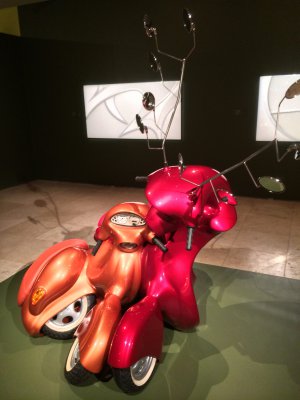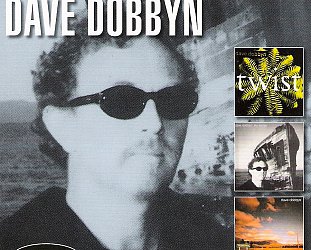Graham Reid | | 2 min read

The most common defense of intellectually bankrupt or emotionally empty contemporary art is that it “invites the viewer to ask questions”.
This is reflexive curator-speak which throws the responsibility back on the nay-sayer. It is possible for an intelligent, informed observer to say, “Yeah, but I still don't buy it”.
And while artists “interrogate the narrative” or “deconstruct the discourse”, the fact remains much contemporary art is hollow at the core even if the surfaces are sometimes alluring.
The work of Melbourne artist Patricia Piccinini however neatly sidesteps curator-speak and comes directly to her audience: She asks questions, she invites answers and even gives a few, and most of all makes work across many media which is interesting, engaging and comprehensible.
Those latter three qualities are perhaps not much rated in some circles where an essay is required to bring an object or installation to life and relevance, but Piccinini currently has major retrospective of her art occupying the first floor of the Newcastle Art Gallery, just an hour north of Sydney. It runs until February 22 and it's worth the drive to see it. And the other exhibitions which include the Kilgour Prize for figurative and portrait painting (on until January 25).
Piccinini's practice is across multiple disciplines – sculpture, installations, video and paintings – but some work better than others.
 Her hot
air balloon Sky Whale, commissioned for the centenary of Canberra in
2013, didn't actually get off the ground in Newcastle, and her video
work seems the least of her ideas.
Her hot
air balloon Sky Whale, commissioned for the centenary of Canberra in
2013, didn't actually get off the ground in Newcastle, and her video
work seems the least of her ideas.
It is her creation of life-size humanoid creatures which are striking for their immediacy. At one level they can seem coquettishly cute (like the little monkey-featured boy with a bird) and yet others are ineffably sad.
Her 2005 creature Big Mother (right) made from silicon, fibreglass, leather and human hair is a naked, free-standing female of no fixed genus – part ape, part human – suckling a very human baby and standing beside travel bags.
These creatures are empathetic creations, they appear lost in the 21st century.
There is a warmth to them which transcends their anthropomorphic oddness.
Other work by Piccinini offer cooler moods, like her sculptural pieces where she reduces the automobile to its most alluring elements: the surface polish, sculptural forms, the bright colours of a Ducati motorcycle or a Formula 1 racing car.
By downsizing the scale of vehicles and removing their least appealing elements (the internal combustion engine, pollution and smell) we are left with just pure design .
 Although
for The Lovers she neatly anthropomorphises two semi-vehicles
(abstractions of motorcycles) and they lean into each other with
affection (right).
Although
for The Lovers she neatly anthropomorphises two semi-vehicles
(abstractions of motorcycles) and they lean into each other with
affection (right).
Elsewhere she works with vaginal and scrotal imagery in pieces made of human hair, creates a swam of fanciful creatures which creep across the gallery floor and offers a series of photos where people interact with her creatures, comforting them.
Piccinini's work, casually and without artifice or guile, explores the interfaces of engineering and anthropology, machinery and humanity, and it neither condescends nor requires a curator's voice to make sense of it.
It is a rare exhibition which deeply engages children – and not in some colouring-in way – as much as it does adults.
And in video clips she speaks of the work with clarity, humour and certitude.
The exhibition – entitled Like Us – is about, among other things, the interconnectivity of life, behaviour and the products we create.
Of it she says, “The world I have tried to create in Like Us is clearly different from the one we live in, but it is not actually that far removed from it. It is a world that plays out the implications of the processes and ideas that animate much contemporary life. It is a reflection of our world, but reshaped by my own personal perceptions … it is more ambiguous than didactic”.
It is also a world that invites you in rather than shuts you out.
And, yes, it asks questions.
For further information see The Newcastle Art Gallery website here





post a comment